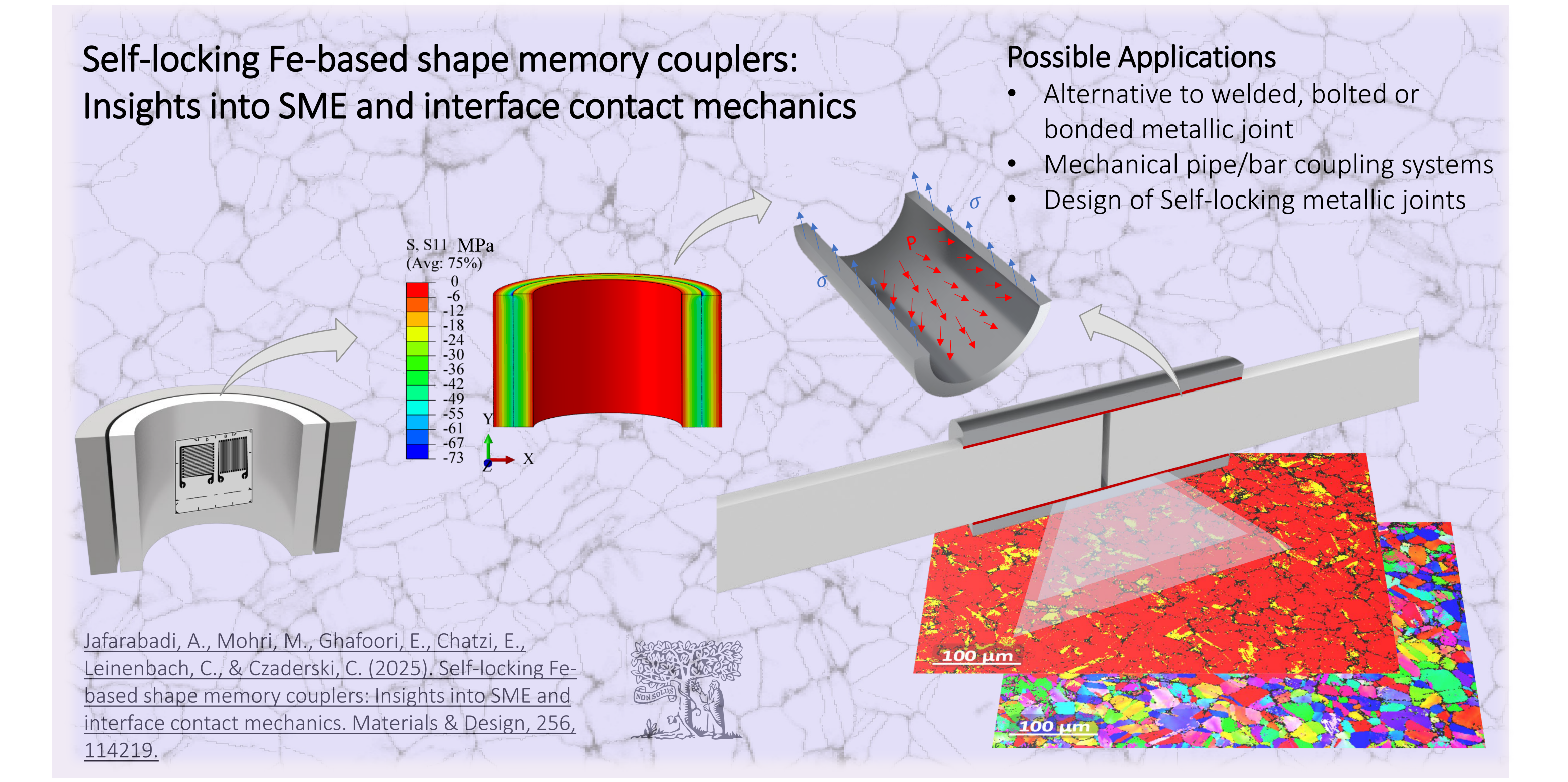
Smart, Weld-Free Connections: Advancing Fe-SMA Couplers for Structural Applications
We are proud to share our latest research, led by Ali Jafarabadi (Empa and SMM Group, ETH Zurich), published in Materials & Design. The study introduces self-locking Fe-based shape memory alloy (Fe-SMA) couplers as a high-performance alternative to traditional welded, bolted, or bonded joints — offering new opportunities for fast, durable, and smart structural connections.
Shape memory alloys are emerging as powerful tools in structural engineering, enabling smart behavior in otherwise passive systems. In this work, we investigate Fe-based shape memory alloy (Fe-SMA) couplers as a novel solution for mechanical joining, capable of delivering strong, reliable, and weld-free connections through the shape memory effect (SME).
The article, titled “Self-locking Fe-based shape memory couplers: Insights into SME and interface contact mechanics” is available in open-access in Materials & Design 👇
external page https://doi.org/10.1016/j.matdes.2025.114219
and presents experimental and computational insights into the behavior of Fe-SMA couplers under activation.
The research was spearheaded by Ali Jafarabadi, in collaboration with Maryam Mohri (Empa), Elyas Ghafoori (University of Hanover), Eleni Chatzi (ETH Zurich), Christian Leinenbach (Empa & EPFL), and Christoph Czaderski (Empa).
Why it matters
For engineering applications in confined or hard-to-access environments, traditional joints can be limiting. Fe-SMA couplers enable:
- Rapid, weld-free installation
- High mechanical grip via self-locking action
- Suitability for retrofitting, repair, or prefabrication
Scientific and Engineering Contributions
- Heat treatment optimization improved the shape memory response by up to 90%.
- High interface contact pressure, reaching up to 50 MPa, was measured during activation.
- Pre-strain effects were quantified, showing that while high pre-strain levels may limit SME at 200 °C, they can enhance performance at elevated temperatures.
- A validated finite element modeling strategy was developed, simulating coupler behavior using virtual thermal contraction to estimate contact forces and joint mechanics.
Outlook
This work lays the foundation for deployable smart joining systems, combining the benefits of SME-based actuation with practical installation techniques and predictive modeling.
We thank Innosuisse (Project 56959.1 IP-ENG) for funding support and Empa, Hilti Group, and re-fer AG for their contributions to this collaborative effort.